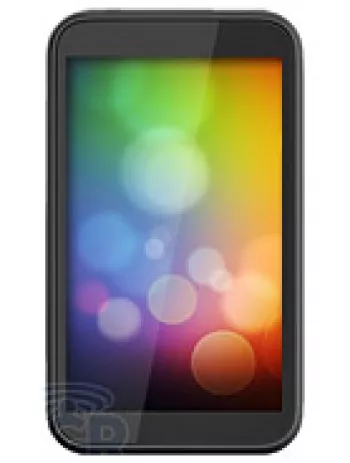
Overview
The HTC One (M8) for Windows (CDMA) was an innovative smartphone launched in 2014 that combined the sleek aesthetics and robust hardware of the HTC One (M8) with the unique software experience provided by Microsoft Windows Phone 8.1.1. Though it partook the foundational traits from its Android counterpart, the M8 for Windows distinguished itself by embracing the Windows platform, appealing to users who desired an alternative to the prevalent Android and iOS ecosystems.
Design and Build
The HTC One (M8) for Windows boasted an elegant design with an aluminum unibody that provided both a premium feel and a sturdy build. The phone had dimensions of 146.4 x 70.6 x 9.4 mm and weighed 160 grams, maintaining a solid yet comfortable grip. It utilized a Nano-SIM card, aligning with modern standards for mobile devices at the time. The Gunmetal Gray color added a sleek and professional look, making it visually appealing to a broad range of users.
Display
Equipped with a 5-inch Super LCD3 display, the HTC One (M8) for Windows delivered vibrant and sharp visuals with a resolution of 1080 x 1920 pixels. The pixel density of ~441 ppi ensured clarity and detail, enhancing the user experience whether browsing the web, playing games, or watching videos. The display's quality was one of the highlights of the device, offering an immersive view with wide viewing angles.
Performance
Under the hood, the phone featured a Qualcomm MSM8974AB Snapdragon 801 chipset, alongside a quad-core 2.3 GHz Krait 400 CPU and an Adreno 330 GPU. This combination guaranteed smooth and efficient performance for everyday tasks and more demanding applications. With 2GB of RAM and 32GB of internal storage, the device handled multitasking efficiently. The availability of a microSDXC slot enabled users to expand storage further, accommodating their growing data needs.
Camera
The HTC One (M8) for Windows boasted an innovative dual-camera setup on the rear, with the primary 4 MP sensor offering an f/2.0 aperture and the second depth sensor enhancing image composition. This setup allowed for unique features such as selective focus and 3D-like effects in photos. The main camera supported video recording at 1080p@60fps and 720p@60fps along with stereo sound recording, enriching the multimedia capabilities of the device. In the front, a 5 MP selfie camera—also supporting HDR and 1080p video recording—catered to those who enjoyed video calls and selfies.
Audio
The device featured front-facing stereo speakers, ensuring that audio was directed toward the user, providing an immersive and clear listening experience. The inclusion of a 3.5mm headphone jack was appreciated by audiophiles, allowing connection with a wide variety of audio peripherals without needing an adapter.
Connectivity
This smartphone supported a wide range of connectivity options, including Wi-Fi 802.11 a/b/g/n/ac, Bluetooth 4.0 with aptX, NFC, and an infrared port, catering to versatile usage scenarios. It also featured GPS with GLONASS for precise navigation and integrated a stereo FM radio receiver. The microUSB 2.0 port facilitated charging and data transfer, aligned with the standard technology of its release time.
Sensors and Additional Features
The device was equipped with several sensors, including an accelerometer, gyro, proximity sensor, compass, and barometer, enhancing the user experience through various apps and services that utilized these capabilities. The inclusion of Windows Phone Hello allowed for a personalized and secure login experience, leveraging the unique features of the Windows operating system.
Battery Life
The HTC One (M8) for Windows was powered by a non-removable Li-Ion 2600 mAh battery. It provided an impressive standby time of up to 387 hours and talk time of up to 24 hours, making it reliable for users who depended on their phones throughout the day. The efficient hardware and software integration helped in optimizing the battery life, a crucial aspect for any smartphone user.
Conclusion
The HTC One (M8) for Windows (CDMA) remains a noteworthy device in the history of smartphones, merging high-quality hardware with the distinctive Windows Phone experience. Though discontinued, it provided users with an alternative to Android and iOS, promoting diversity in the smartphone market. The device's strong build, superior display, and unique camera features combined with the efficient Windows operating system made it a compelling choice for those looking for something different from the mainstream offerings in its time.
Key Features of HTC One (M8) for Windows (CDMA)
- Network Technology: GSM, CDMA, HSPA, EVDO
- Display: 5.0 inches Super LCD3 with 1080 x 1920 resolution
- Operating System: Microsoft Windows Phone 8.1.1
- Processor: Quad-core 2.3 GHz Krait 400
- Chipset: Qualcomm MSM8974AB Snapdragon 801
- Memory: 32GB internal storage with 2GB RAM and microSDXC slot
- Main Camera: Dual 4 MP with dual-LED dual-tone flash and HDR
- Selfie Camera: 5 MP with HDR
- Sound: Stereo speakers with 3.5mm jack
- Connectivity: Wi-Fi 802.11 a/b/g/n/ac, Bluetooth 4.0, NFC, Infrared
- Sensors: Accelerometer, gyro, proximity, compass, barometer
- Battery: 2600 mAh Li-Ion with up to 24 hours talk time
- Build: Dimensions 146.4 x 70.6 x 9.4 mm and weighs 160 g
- Additional Features: GPS, GLONASS, and Stereo FM radio with RDS
HTC One (M8) for Windows (CDMA) Key Disadvantages
- Discontinued status, limiting long-term software and hardware support.
- Only 4 MP rear camera which may not meet modern photography standards.
- Non-removable battery, which can be inconvenient if a replacement is needed.
- Initial release with Windows Phone 8.1.1 OS, which lacks the versatility and app selection of Android or iOS.
- Limited RAM (2GB) may result in slower performance compared to newer devices.
- Older Snapdragon 801 chipset, which might struggle with more demanding applications available today.
- Lack of confirmation for display protection, which raises concerns about screen durability.
- The 66.7% screen-to-body ratio is less competitive compared to modern devices which offer higher ratios for a better viewing experience.
- MicroUSB 2.0 port instead of the more modern USB-C connection, which offers faster data transfer and charging speeds.



















View Also
More Phones
All Rights Reserved +14266 Phones © Mobilawy 2025

























